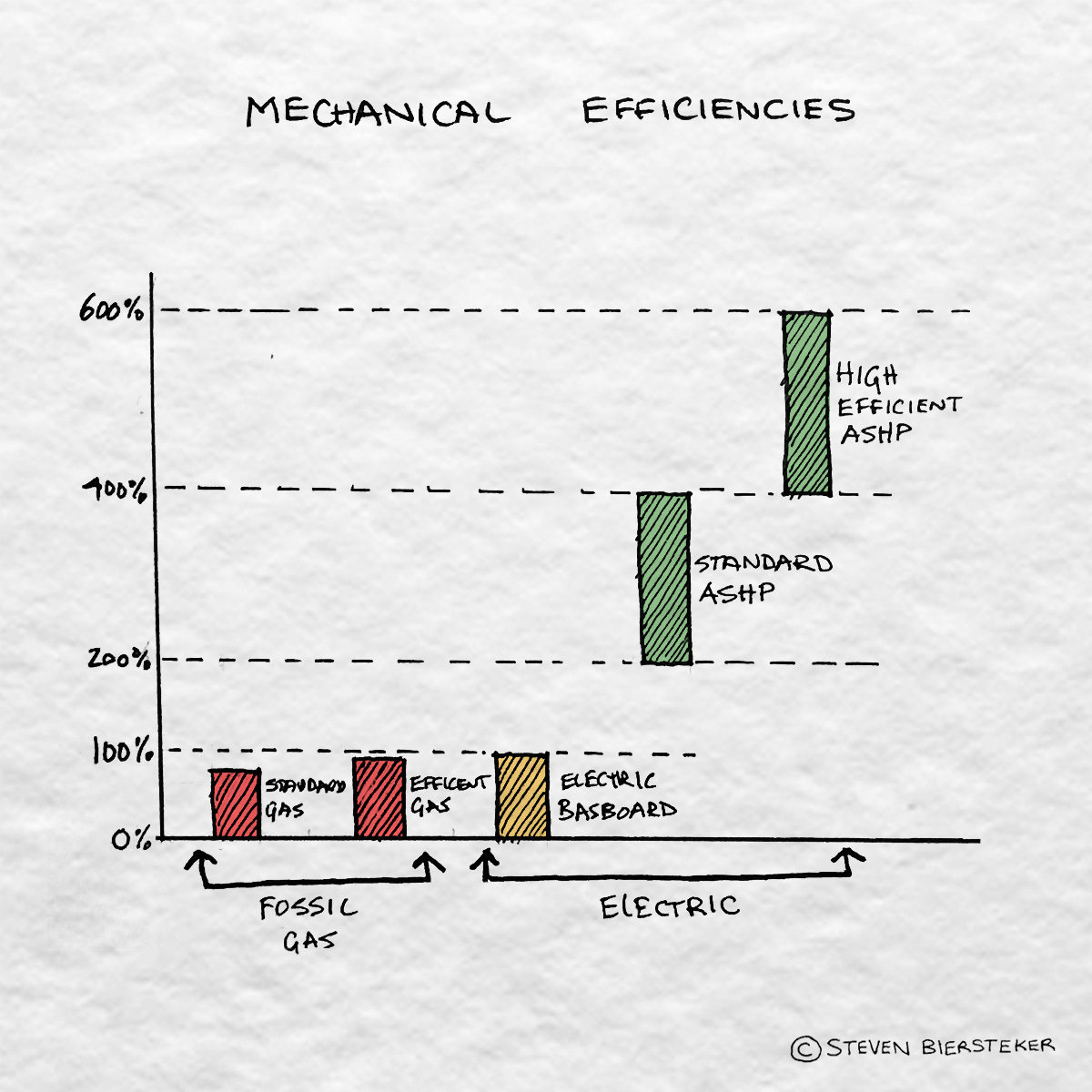CA16 - Throwing Money Away
Why choosing efficient systems is key to carbon reduction.
THE TOPIC - ENERGY EFFICIENCY
Are you throwing energy out the window? Let me tell you my story before you answer:
I love eggos. That’s right, the cheap toaster waffles you ate as a kid. I think it’s the combination of the ease they are to make, the rigidity to eat them, and the deep pockets for extra maple syrup. A few weeks ago I did an experiment with my favorite snack. How many waffles could I cook simultaneously with a two-slot toaster? To my surprise - the answer was 4!
How did I manage such magic? Well, our toaster is terribly inefficient, enough that while the two waffles inside were getting cooked, two waffles on top were cooked with all the heat that was escaping. So all of that energy wasn’t being used for cooking, it was thrown out the top.
Toasters aren’t the only things that suffer from this problem. If you’ve got a gas-fired furnace or fireplace you’re dealing with the same issue. Energy is getting thrown out your roof, because using every unit of energy for heating is very difficult. Let’s look at a quick history.
1970’s & 80’s - typical furnace 60-80% efficient
1990’s - introduction of sealed combustion units - 80-90% efficient
2000’s - two-stage and modulating gas valves - 95% efficient
2010’s - condensing gas furnaces - 98% efficient
Doesn’t 98% efficiency sound great? Well let’s look at heat pumps to compare.
An ASHP’s efficiency ranges from 200% to 600% depending on the technology and the temperature differences from exterior to interior. Technically that isn’t efficiency in the same way as a gas furnace, but it’s a measure of how efficient it is at turning energy into heat. How can ASHP’s be 600% efficient? Let’s see what ChatGPT has to say about that.
“A heat pump's efficiency is expressed as its coefficient of performance (COP), which is the ratio of heat output to energy input. A COP of 3.0 means that for every unit of energy used, it produces three units of heat energy, making it "300% efficient." However, the heat pump is not creating energy out of nothing but is simply transferring heat energy from one location to another.” - ChatGPT
So I’ll ask you this question again - are you throwing energy out the window?
PS - Have you seen this cool project that uses waste heat from a data centre to heat a university?
THE GRAPHIC
WHAT WE CAN DO
Efficiency matters for three primary reasons:
Keep the heat in
Use more efficient systems
Electrify our buildings
Let’s dig a little deeper:
1 - Keep the heat in
Even with the most efficient mechanical system, a building that isn’t designed to keep that heat in, is limiting the benefits of efficiency. Although the first solution most people consider is to insulate more, which has obvious benefits, but a lesser talked about solution is the importance of minding your thermal bridges and increasing your air tightness. Here is a list of strategies I would recommend:
The red door of death (test your airtightness during construction)
Model critical thermal bridging details (THERM is free)
Increase insulation levels
Vestibule critical entrances
Use an HRV for ventilation requirements
2 - Use more efficient systems
Efficient systems will make every kW of energy go further. It doesn’t mean it’s cheaper, but it does mean you use less energy for the same amount of heat. An 85% efficient boiler throws 15% of its heat out the window and compared to a heat pump is less than 33% as efficient. Other ways to use efficient systems is by sharing heat within your building through VRF systems that can operate both heating and cooling simultaneously and HRV units that reduce total loads in the building.
3 - Electrify our buildings
Choosing efficient systems is the first step, but electrification is the change that will have a massive impact on your GHG emissions. Here in BC, for example, the GHG emissions from fossil gas are 17x higher than electricity. That’s massive. Factor in the efficiency of a heat-pump system and that number goes up to 51x.
1 PERSON TO FOLLOW
Jessica Allen is a building designer with a passion for building performance and function over form. Her career started with code compliance and has grown to include air tightness consulting and blower door testing for residential and commercial buildings. She is passionate about educating the industry - give her a follow.
1 RESOURCE TO ACT ON
The New Buildings Institute (NBI) is a fantastic resource for anyone looking to design low-impact buildings. In specific they publish a series of Tools and Guides that have killer info. Here is just a few examples.




